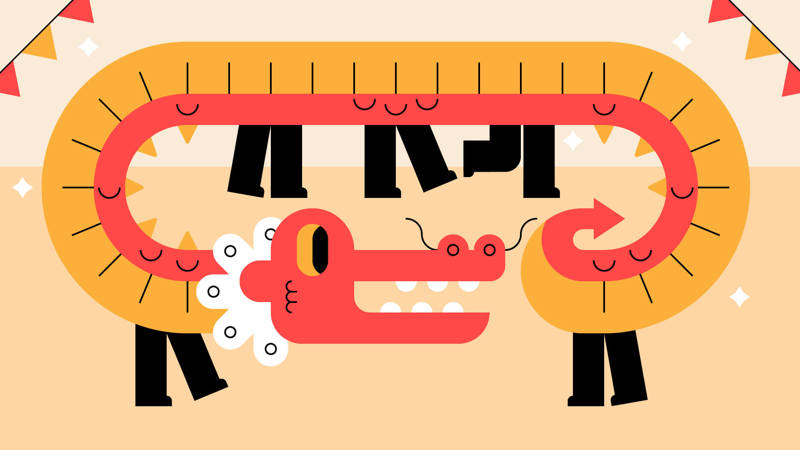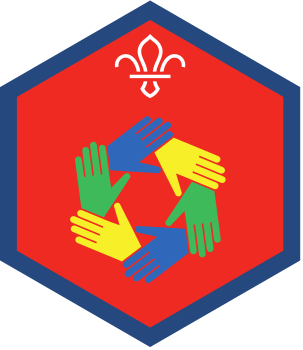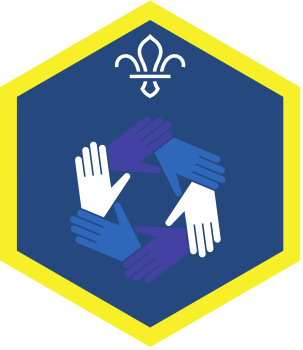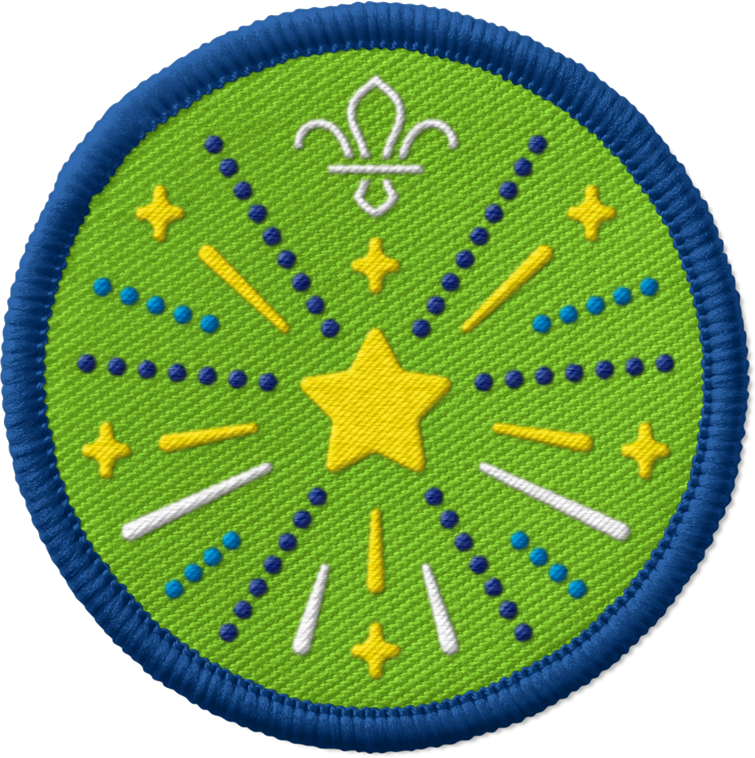
Catch the dragon’s tail
You’ll need
- Device to play music
Talk about the dragon dance
- The person leading the activity should explain that the dragon dance is traditionally performed in Chinese culture, often during festive celebrations such as Chinese New Year. Dragons are thought to bring good luck to people.
- The person leading the activity should explain that a team of dancers move together so that they look like a long flexible dragon.
Play the game
- Everyone should split into teams of five people.
- Everyone should check that it’s OK to touch the person in front of them. If it is, they should put their hands on the shoulders of the person in front of them, or hold on to the bottom of their top.
- The player at the front of each dragon is the head, and the player at the back is the tail. Everyone else is the body.
- Everyone should check there’s enough space between themselves and the person in front of them—everyone’s arms should be straight. The person leading the game should remind everyone not to grip too tightly to the person in front of them, and should tell everyone that they must not run or pull on anyone.
- The person leading the game should start playing some traditional Chinese music.
- The person leading the game should say ‘go’. The head of each dragon should try to touch the tail. The players in the body should try to stop it happening, without letting go of the person in front of them.
- When the head catches the tail, the dragon should stand still. The head should go to the back of the line to become the tail. The person who was second in line is now the head.
- Keep playing until everyone in each dragon has had a turn at being the head and the tail.
Reflection
This activity helped remind you that you’re an international citizen, and helped you to respect others. You learned about a new culture. What do you think of when you hear the word ‘dragon’? You may think about monsters, breathing fire, and eating people. In China, dragons are lucky—people believe they bring people luck at festivals like Chinese New Year. Why is it useful to know what things like animals mean for people from other cultures?
Can you think of an animal that has meaning for you? For example, the English national animal is a lion, symbolising strength. Where do you see lions in England? They’re on sports kit (such as football teams), flags flying in places like the royal places, and on coins. The national animal of Scotland is the unicorn, Wales is the Welsh Dragon, and Northern Ireland doesn’t have a national animal. Animals can also have meanings in stories, such as the Harry Potter stories.
Even though some animals may mean different things here and in China, we all use animals to mean things. Can you think of any other similarities between you and young people in a country such as China?
Safety
All activities must be safely managed. You must complete a thorough risk assessment and take appropriate steps to reduce risk. Use the safety checklist to help you plan and risk assess your activity. Always get approval for the activity, and have suitable supervision and an InTouch process.
- Contact games and activities
Make sure everyone understands what contact is acceptable, and monitor contact throughout the activity.
Ask a dragon to catch another dragon’s tail.
It’s up to you how many dragons play at once. They may take it in turns, or if you have enough space, more than one could have to avoid each other while playing.
Play the game at your own pace—change how you move, from walking, creeping, and hopping, to change the challenge.
Can your dragon dance? Move around the space in time to the music, weaving, ducking, and moving like a dragon.
Remember you can play this game at your own pace—it’s OK if people want to walk, not run. You could make a beat by clapping (or banging a drum) so people know how fast to move.
No one has to touch other people (or be touched). If people only want a turn as the head or the tail, that’s OK.
All Scout activities should be inclusive and accessible.
Make a group dragon by decorating large cardboard boxes. Hold them over your heads to make a long dragon, and make up a dance to perform to family and friends.



